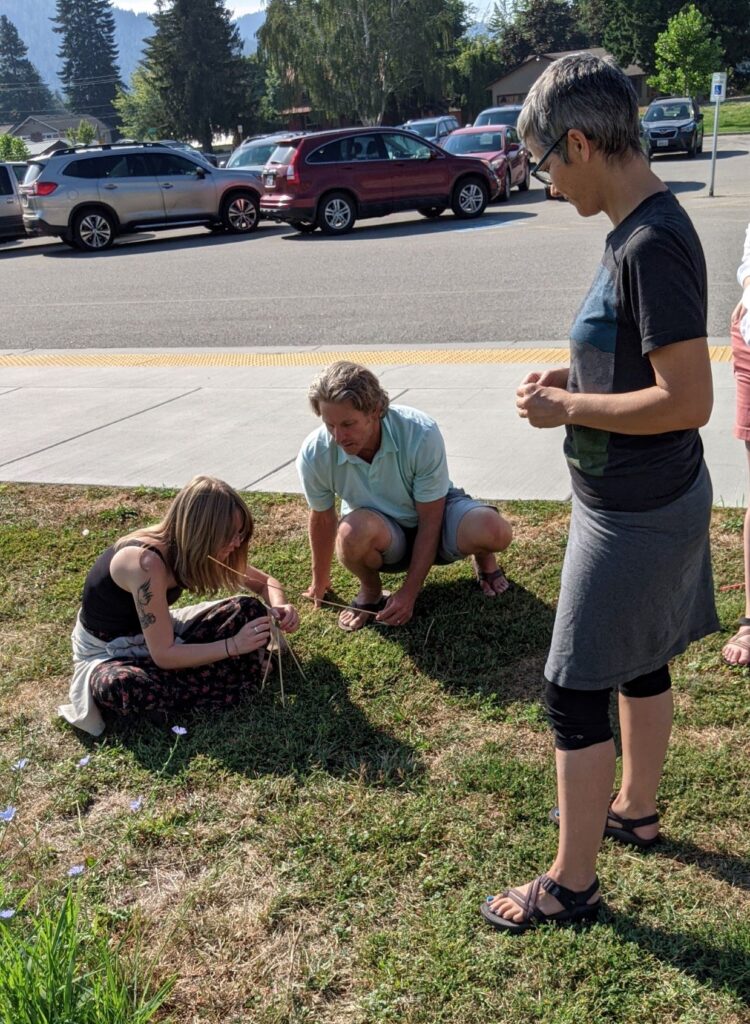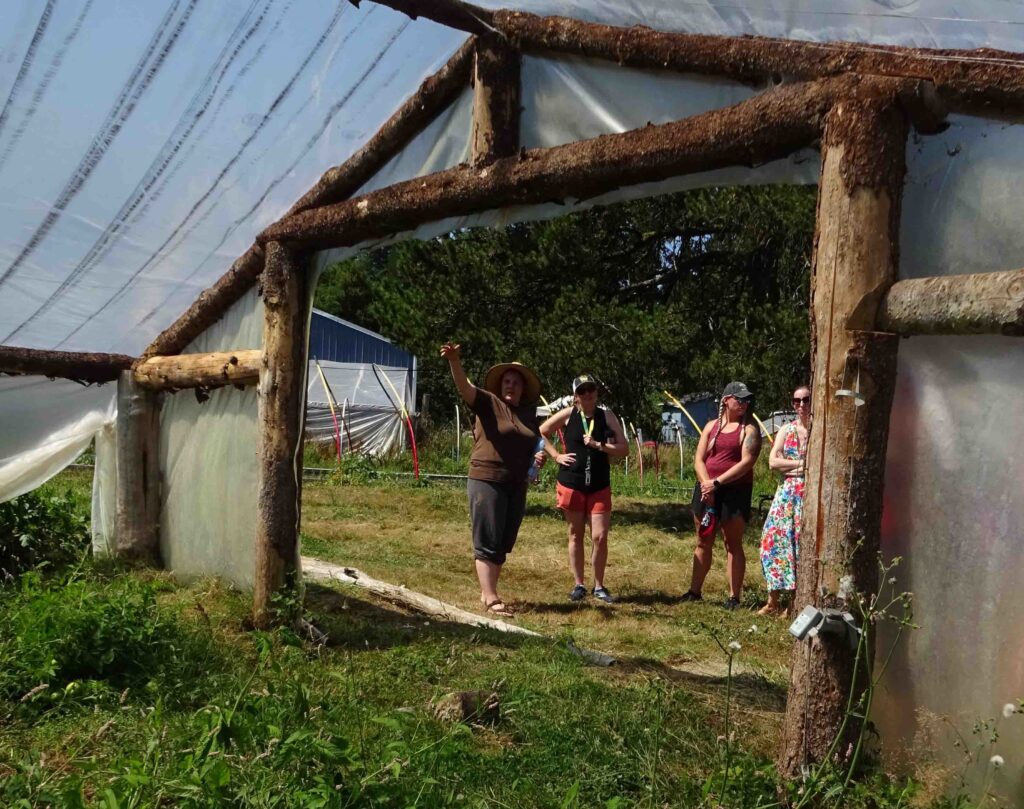If you listen closely, you can hear it: the hum of hundreds of educators across Washington State getting ready to bring kids outside in the new school year using PEI tools and resources. From ‘sit spots’ for younger students to forest management courses for the upper grades, students will have multiple opportunities to explore and enjoy nature. Here are three examples of how school districts in different regions are gearing up for the 2022-23 school year.
Cascade School District, Central Washington
In August, an incredible 116 members of the Cascade School District staff – the most at one time of any school district in Central Washington – engaged in

a two-day workshop led by Central Washington FieldSTEM Coordinator Megan Rivard. The team went through a sequence of outdoor activities, including drawing maps of special places from their childhoods, brainstorming how to help students connect to nature and create their own special places and practicing being the owner of 400 acres of hypothetical forest in Project Learning Tree’s ‘If You Were the Boss’ scenario.
Later the group got familiar with Washington State Environment and Sustainability Education (ESE) standards and considered ways to incorporate the learning goals in their content. Middle school teachers were inspired to create a project about human/bear interaction through different political, legal and agency lenses. Moving into the school year, Rivard hopes the district will develop a team that works directly with their peers and serves as a liaison to PEI. “We have several teachers who are amazing leaders and doing great work with PEI,” says Rivard. “My hope for the next year is that we can start building FieldSTEM leadership teams within the district.”
Aberdeen School District, Olympic Coast
Twenty-four teachers from five elementary schools and the middle school in Aberdeen School District attended a two-day workshop on August 18 & 19 to help them feel comfortable and confident incorporating their school gardens into their curriculum and teaching practice. The group learned basic gardening skills and participated in a demonstration of how to establish a classroom culture that supports outdoor learning, among other activities.
The workshop included a visit to a local farm where the owner shared what it’s like to grow food crops and a session in which a Master Gardener gave advice on how to overcome some of the causes of school garden failures teachers experienced last school year. Toward the end of the day, participants reflected on how to use what they had learned with their students. “It was a great workshop,” says Coastal FieldSTEM Coordinator Julie Tennis. “Our main purpose was to have teachers both use their school gardens and feel confident using their school gardens. I think that we accomplished both tasks.”
Brownsville Elementary School, Central Kitsap School District
The staff and faculty at Brownville Elementary School attended an all-school Introduction to FieldSTEM workshop in August, with the goal that teachers will implement one or two FieldSTEM experiences in the next school year. Participants experienced a field investigation in their schoolyard and worked with grade-level peers to explore ways to incorporate it into their curriculum. They also completed a mapping activity to identify outdoor learning opportunities on their school grounds and discussed outdoor classroom management strategies.
Already, the school has one strong community partner in Pat Kirschbaum, School and Youth Educator for stormwater programs in unincorporated Kitsap County. Pat is going to be introducing a multi-month-long project on the health of the school’s storm drains through the Storm Drain Detectives lessons provided by Kitsap County Public Works. She will lead the 5th-grade students on a tour of their stormwater system where students will regularly monitor the storm drains for debris, trash, and sediment levels. They will summarize and graph their results in a letter to the schools’ maintenance staff explaining their findings, as well as send the data to the county’s Stormwater Division. Other projects with community partners will focus on shellfish, marine health and marine water quality monitoring.
These are just three examples of the many ways educators are planning to use FieldSTEM with students in the next year. To learn more about PEI’s tools and resources for teachers, visit our FieldSTEM Resources page.
